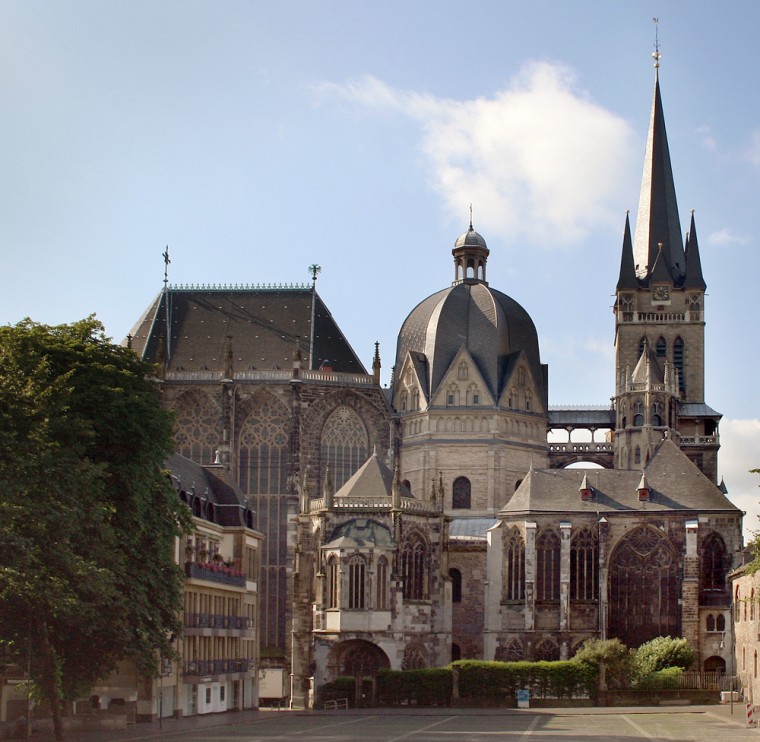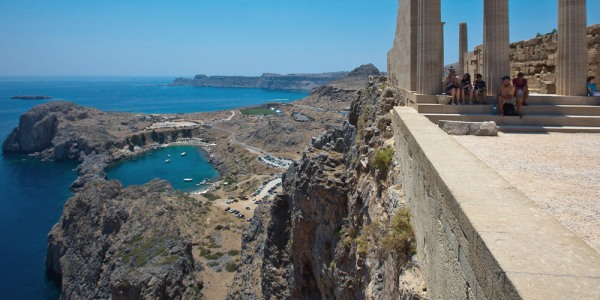Textbooks don't do justice to historical figures or ancient sites. But stand on land once occupied by a long-dead king, queen or other notable and that same site suddenly leaves an indelible impression.
This was experienced during a recent trip to Aachen, a German city in the North Rhine Westphalia region, once home to King Charlemagne more than 1,200 years ago.
Aachen, which is aptly named for its world-renowned therapeutic healing springs, heated by underground volcanoes, borders the Netherlands and Belgium, a convenient location for the sometimes violent conqueror who, in more than 50 campaigns, successfully overtook and Christianized most of Europe. Local lore states that Charlemagne, who lived from 742-814 A.D., was better known to the Germans as Karl der Grosse. He bathed daily in the healing, mineral-laden waters.
But he wasn't the first. His father, Pippin the Short, had a chapel and royal bath built in near the healing pools of water. Evidence shows that people from as far back as the Stone and Bronze ages took advantage of the bubbly hot baths, as did the Celts and legions of Romans. The springs, a steamy albeit sulfuric-scented brew, remain the hottest volcanic waters north of the Alps.
The historic Friedrich Wilhelm Platz pump station covers the water's source and forcefully streams 40 million gallons of the water to the pools located one-half mile away. A small amount is piped through the building into spigots protruding from the mouths of sculpted lions. The water flows into basins fixed into arches in the entrance's rotunda. Many have claimed a cure by drinking from the spigots. However the distinct and overpowering sulphurous odor does not discourage the hearty Germans, who are more than convinced of its powers. A healthy active population makes one think, perhaps there is something to the legend.
Slideshow 23 photos
A European tour
During that recent visit a few American journalists dipped their hands into the water that came from the station's spigots. It was too hot. Hands were pulled away, but too late. The sulphurous smell remained.
Fortunately, guests today have more options for rejuvenating without suffering the odorous side effects.
Carolus Thermen Bad Aachen offers modern guests eight indoor and outdoor pools filled with the same hot water that has bubbled to the surface for thousands of years. Although the minerals remain, the rotten egg smell does not. Swimmers can bath without the odor that must have plagued people centuries ago. Spend an hour in the pool and walk away relaxed and rejuvenated and, more importantly, smelling fresh and clean.
But, there is far more to Aachen than hot odoriferous water and a king bent on Christianizing the world.
One outstanding Aachen creation is actually edible. The German Christmas treat, printen, a spicy gingerbread-like cookie, is made in Aachen year-round, unlike the rest of the country, where it is only made during the holidays. One store is dedicated just to making and selling printen. It is offered plain, with nuts, cherries, or drizzled with chocolate. Many packages were purchased and a lot of printen was eaten during the few days there. Because it is out of season it would not be found anywhere else in the country.
Written accounts tell us that Charlemagne, King of the Franks and Emperor of the Holy Roman Empire, named Aachen as the world's hub during his reign. From the 9th century and beyond Aachen was known as the capital of Europe and the emperor's city. It's easy to see why this overly zealous defender of the faith chose this city bordered by two other countries and home to the healing waters.
To honor his religion Charlemagne commissioned and oversaw the building of the Aachener Dom Cathedral, named in 1978 as Germany's first world-heritage United Nations Educational, Scientific and Cultural Organization, or UNESCO, site.
Gothic additions to the cathedral were later made the 14th and 15th centuries. This is a must-see visit, for its octagonal architecture alone. Gold statues and its ornate décor are also a draw. Fortunate tourists may hear Germans break into impromptu songs while viewing ancient religious statues.
Aged brass statues, sculptures and fountains are interspersed throughout the city. Although all are notable, a sculpture of four brass puppets sitting around a fountain stands out. Visitors are encouraged to move the hinged hands and bodies of the statuesque puppets.
Accommodations in Aachen are reasonable and a few days spent at the Hotel Royal on Juelicher Strasse will not cost much. It is situated on a busy corner on the main street. Only a few steps from the hotel bring visitors face to face with a stone wall that hides another world. Hidden behind the wall -- an endless park filled with trees and people enjoying nature. From there it was a short walk to the thermal baths.
Some spend evenings at the popular state-run Aachen Casino, a gambling palace that is another short walk from the Hotel Royal. The sprawling building is home to the casino and an upscale restaurant. There the croupier, Robert Kranz, teaches visitors how to play French roulette. Kranz has run a table for more than 25 years.
A large percentage of the money lost in the casino goes to government programs. The rest runs the popular gambling site. Most nights the casino buzzes with the voices of guests, dressed in evening finery and more than willing to give up a few Euros for the experience. German etiquette requires winners to give a portion to the croupier. This supplies Franz's only income, which is why he said it is in his best interest for patrons to beat the house.
While some may gamble until the wee hours, at a reasonable hour most head for home or the nearby hotel.
One must have enough rest to visit Aachen's fine museums, its ancient town hall and experience its restaurants. Of course, if that isn't tempting enough, the thermal water always beckons.
For more information:
There are many other attractions here. Take a look at the coronation chair, made from ancient sacred stones. The Suermondt Ludwig Museum holds pieces dating to the Middle Ages. Other museums offer equally enticing exhibits.
Aachen Tourist Service
Infor@aachen-tourist.dewww.aachen-tourist.de

